This is going to be a long post
I got the samples I bought from Hou De today – only took three days for them to ship it out and get it to me, so kudos to them. This is the first time I’ve bought stuff from them, and nothing’s better than fast shipment to leave a good first impression.
The two samples I purchased were the 95 Shui Lan Yin 7542, and the 94 8582 cake. I decided to try the 7542 first. There’s also a freebie of maocha (raw materials of puerh cakes, essentially). It’s a whole bag full of it, so I’ll probably drink that at some point….
Onto the tasting, this is rather exciting. I’ve had a number of older (20+ years) cakes before, mostly thanks to the kindness of tea friends from Hong Kong and the generousness of shopkeepers (but of course, I pay them many times over for their teas). I’ve also had a decent sampling of young cakes. Cakes in the 10 year range, though, I have not had many of at all. I don’t know why that is, exactly. I suppose it’s because tea friends, those who are kind enough to share, tend to have fantastic collections and they’d rather drink the older stuff now. So they bring out the good stuff (of course there’s also bragging rights!). Teashops will offer you any young cake you want to try, so getting to taste young stuff is never a problem. Older cakes are just expensive enough so that not every shop will want to share with you, but you won’t find a lot of older tea friends who have lots of them and opening them up for serious drinking. So, I guess, that’s why I’ve never had many of them.
The sample from Hou de, when dry, smells a little musty, as many puerh tend to do. They sent me 20g, so I am using about half for my pot, and leaving half for a future tasting, perhaps when my girlfriend returns. The tea is very loose already, with some stuff easily falling off. I broke the longish piece into two, so it’ll fit in my pot, and on with the brewing.


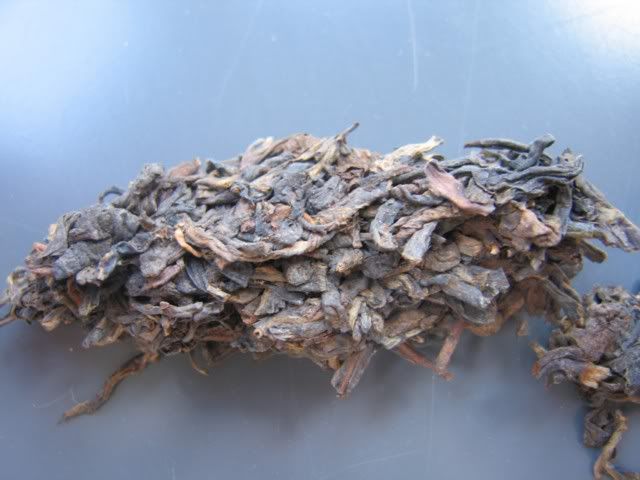
The wash came out brown, but not dark brown, and clear. Good sign, at least, that it’s clean. The first infusion – marked taste of camphor, with a hint of bitterness in the back end. After drinking, there’s a lingering taste that stays in the mouth that feels somewhat minty. It is that taste of raw puerh – the same thing you’ll get when you drink a good, strong, young puerh. The taste lingers in the back of the throat, feeling cool and a little minty. This is a sign, I suppose, that this cake is not fully mature and retains an edge of rawness in it.
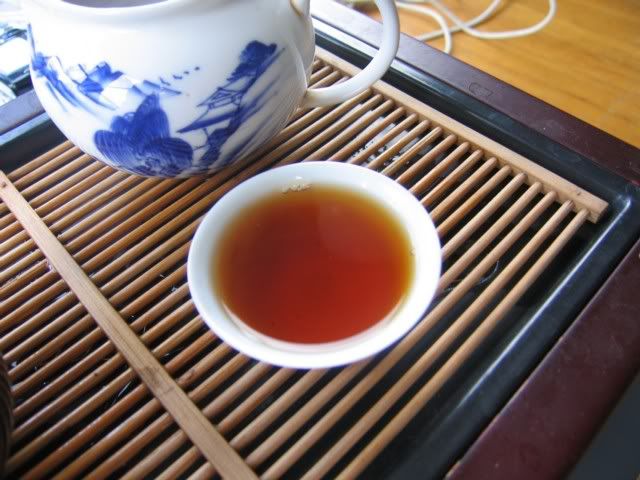
First infusion
Second infusion is similar to the first, with stronger flavours and, in my second cup (my pot is more than one cup) a hint of sourness. There’s a sense of astringency. I’ve heard that Shui Lan Yin tends to be on the bitter side, and I think it shows. The rawness in the end is stronger and would be more obvious to those who don’t drink puerh. The liquor is thick.

Second infusion
Between the second and the third infusion I waited a bit, because I had to add some water and let it boil. I also tried something different – adding a bit of Fiji water to the filtered water. This is something the folks at the Best Tea House do. Instead of bringing 100% mineral water to a boil, they use mostly filtered water and add mineral water (about 1/5 of the entire volume, I’d say) to the already hot filtered water. According to Mr. Chan, the proprietor, bringing full mineral water to a boil from room temperature does funny things to the water and is not ideal. Dunno if it’s actually true, but it does dilute the water enough so you avoid all mineral deposit problems. Anyway, I digress
Third infusion – is this a placebo effect, or do I seem to feel this brew is somehow lighter in composition? I think the new addition of Fiji did do something to the tea, although it’s hard to describe. It’s almost made it a little…. Lighter. The flavours mellowed out a bit compared to the first two brews. The camphor is gone a bit (is this what Tim’s talking about?). Then again, maybe my infusion duration is slightly on the short side. Let me try a longer steep next round. The raw aftertaste though seems to be here to stay.
Fourth infusion – definite bitterness coming out from the tea, not in a bad way, but it’s there. The rumours are true. It’s what Chinese (or at least Cantonese) call “gan†甘, which literally does mean sweetness, but it’s a sort of bittersweet taste . I think this taste shows up when something’s bitter enough for your tongue to compensate for it by tasting everything else as slightly sweet. The bottom of the cup smell turns more medicinal, slightly similar to my loose puerh, but not as strong. In fact, the aroma of the tea is not terribly strong – rather subtle. Since I’ve been drinking slightly fast, I am now starting to feel the cha qi. Even though it’s cooling down since I sat down and starting brewing, I’m still sweating.
Fifth infusion – the initial rush of bitterness and camphor taste is gone, giving way to a more mellow brew. In the taste there is slightly more medicinal stuff – I can’t really describe what it is, but it’s changed. The liquor’s gotten lighter. Maybe I need to extend brewing time even more than I thought. Hmmm.
Sixth – the tea is turning sweet. The liquor is determinedly lighter, both in colour and in taste. I already extended the brewing time to over a minute, but it’s the same. It’s interesting how this one drops off so quickly – a little unusual. I didn’t overfill the pot, but it wasn’t exactly a underbrewed either. Hmmm. A hint of camphor left.

Amount of tea I used
7th onwards…. Hmmm, what happened? It’s really weak, and you can tell there’s not much left. I suppose 7 is ok, but I expected a little more…. I stopped at 8. It’s still got flavour, but it’s mellow and weak and not going anywhere even with 3 minute infusions. Time to wash the pot.
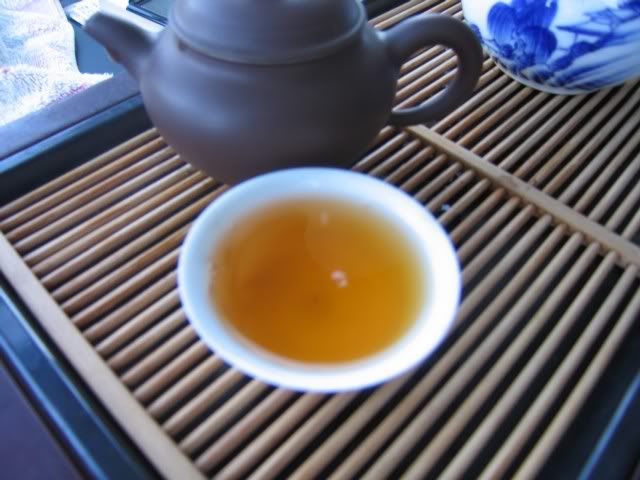
Tail end of things
Will I buy this again? Probably not. It’s decent, but not great, and I’m not sure if it’s worth this much money. It reminds me a little of the 30 year old loose puerh I’ve bought before from the Best Tea House, and from what I can remember, that was better. Regardless, that is cheaper, and this, while a good sample, is not a great sample.
Then again, perhaps with some age it’ll get better. I really don’t know, and that, unfortunately, is experiences and knowledge that I do not have right now. 🙁


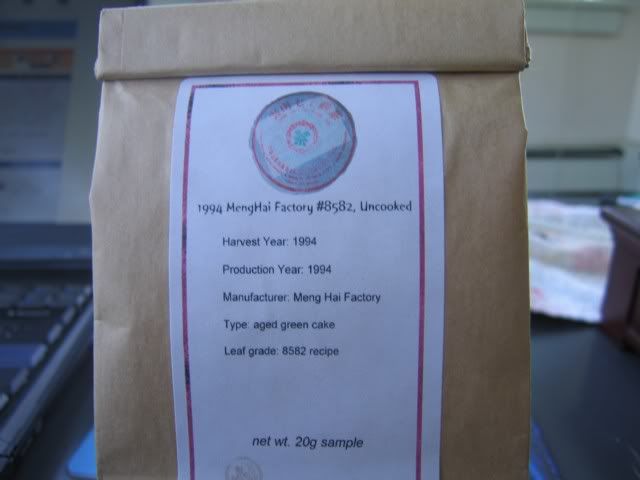

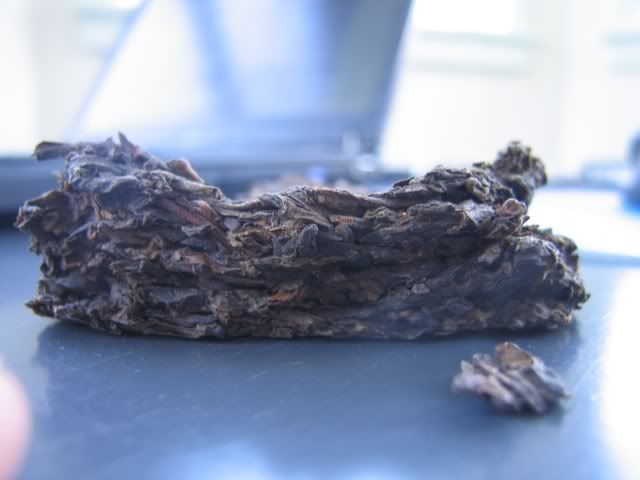

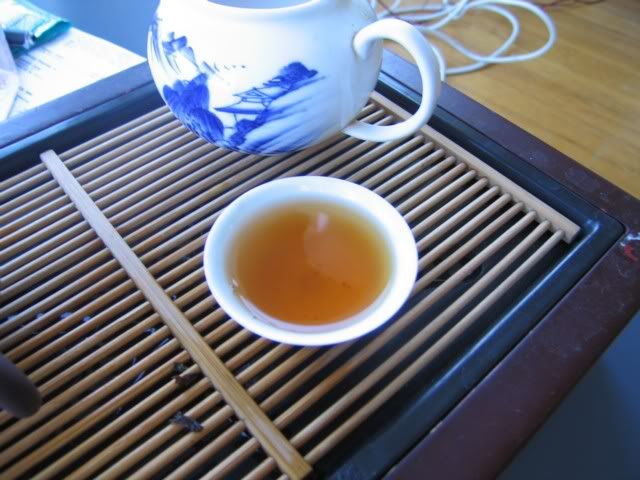









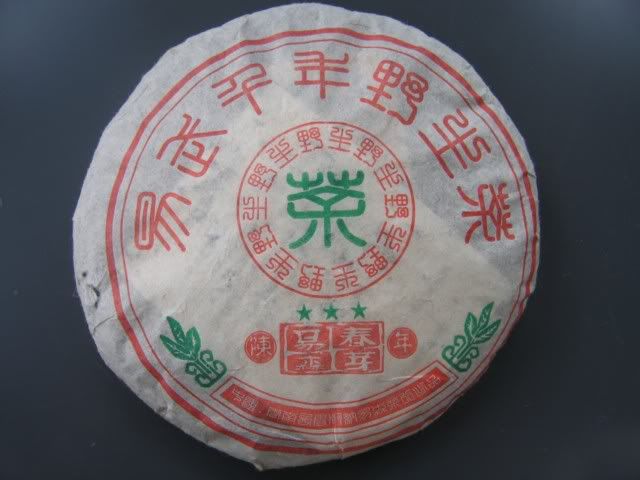
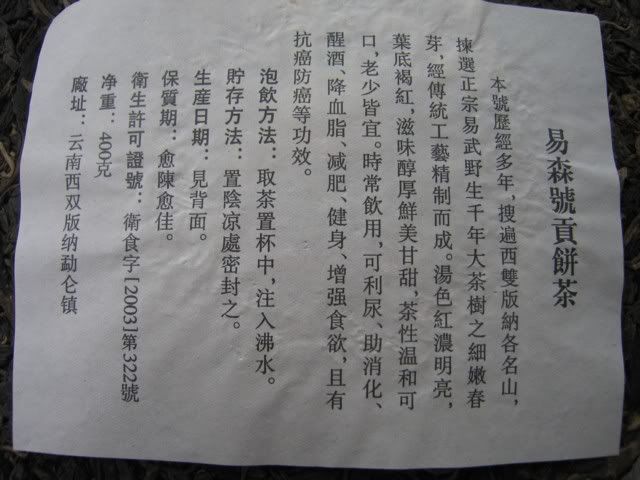
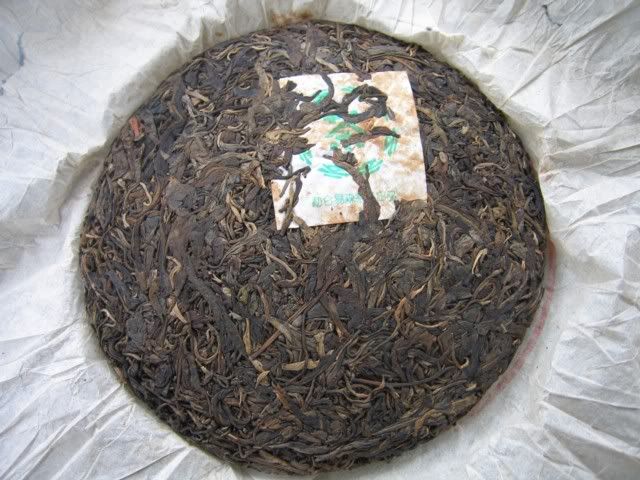
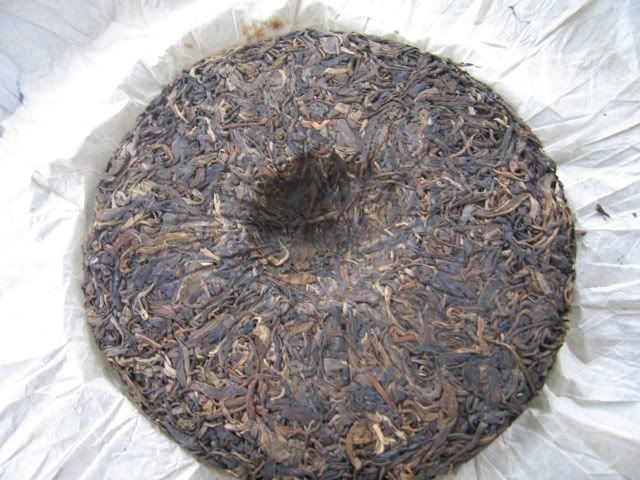
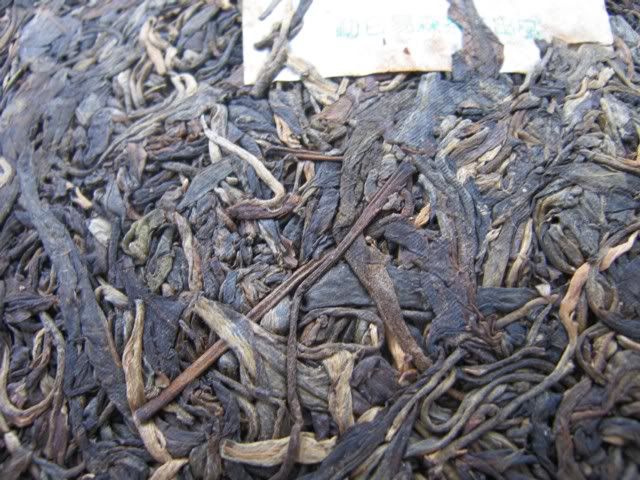

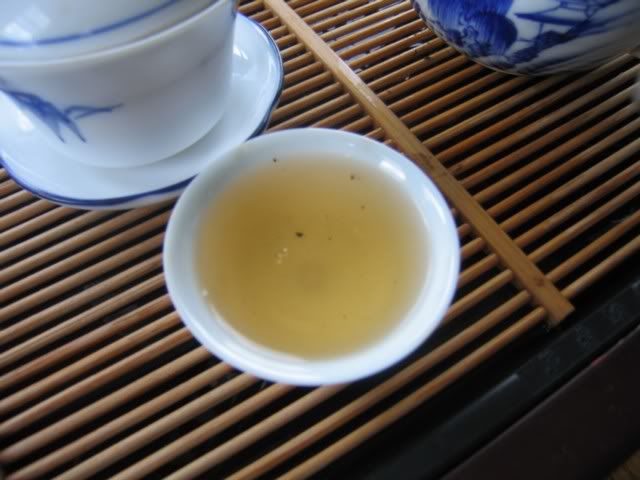
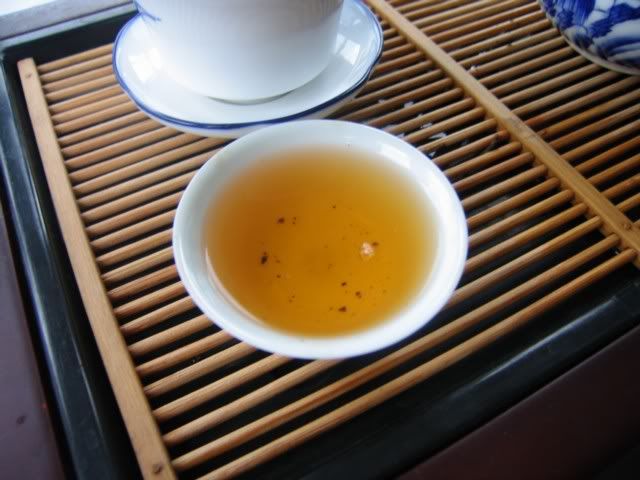
Yeah whisky prices have been leaking too, as well as luxury watches. I wrote a post maybe a decade ago…